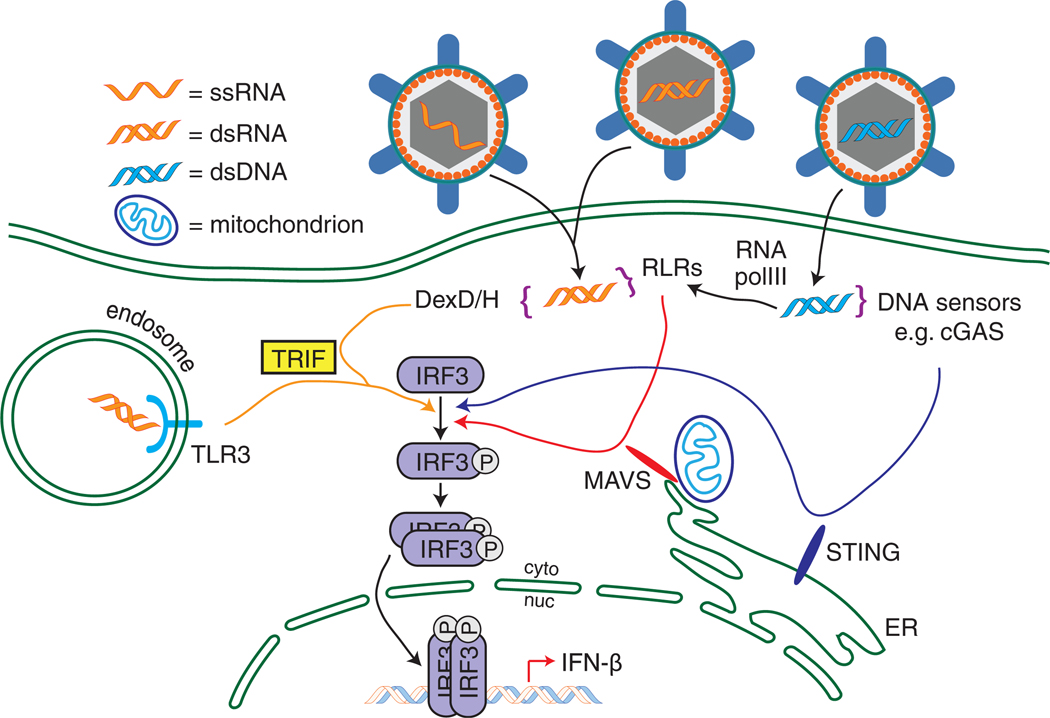Fig. 2.
Convergence of antiviral sensing pathways on IRF3. Viruses containing RNA genomes, when endocytosed, present RNA ligands for TLR3 in endosomes, which then signals through TRIF to activate IRF3. RNA PAMPs generated during viral replication can be detected in the cytosol by the RLRs or other DexD/H helicases that signal through MAVS or TRIF, respectively. Viral DNA in the cytoplasm either is sensed directly by molecules such as cGAS, which signals through STING, or is transcribed by RNA pol III to generate RIG-I ligands. For simplicity, MAVS is shown on the mitochondrion, and STING on the endoplasmic reticulum (ER), though both molecules are localized to multiple intracellular membranes. Activation of these various pathways leads to IRF3 phosphorylation, dimerization, nuclear translocation and the transcription of IFN-β.

